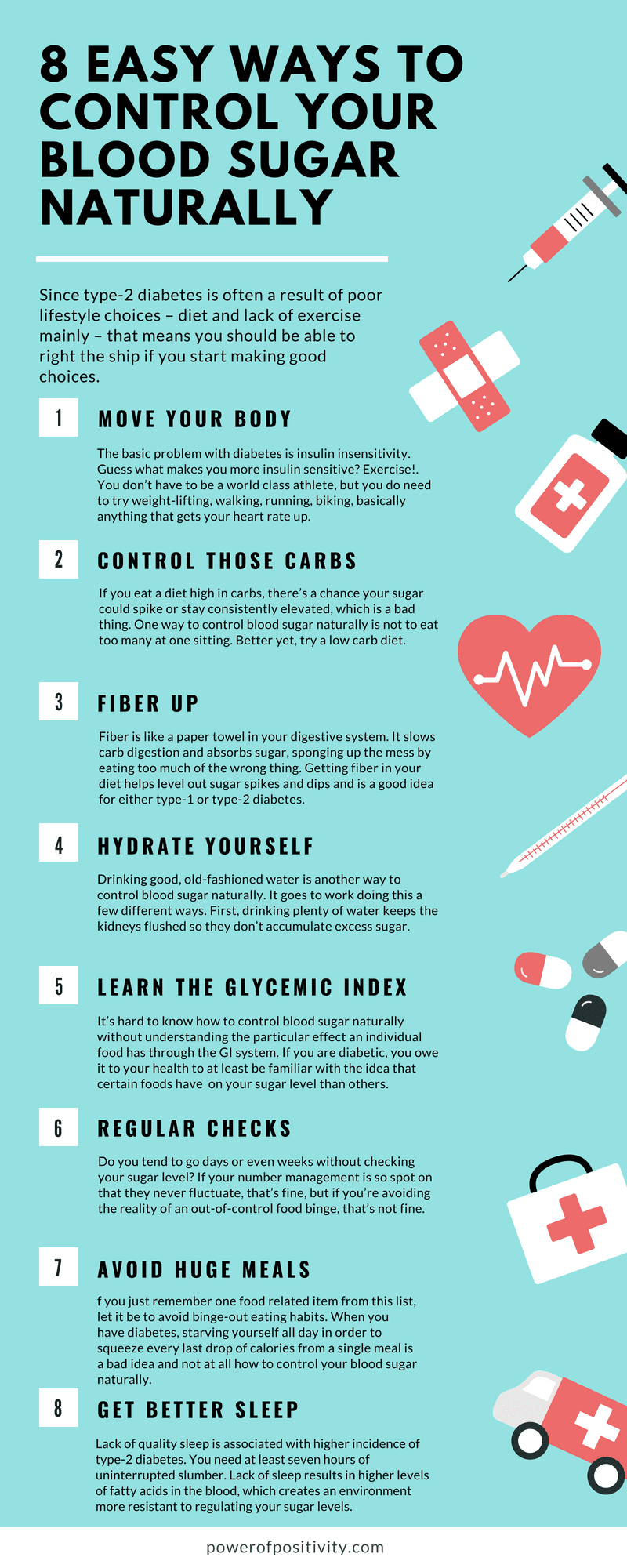Diabetes is a growing problem in the United States. A 2012 study reported by JAMA (Journal of the American Medical Association) found that 12 to 14 percent of US adults had developed Type 2 diabetes, while 37 or 38 percent were prediabetic, which meant they were at risk of developing full-blown diabetes within five years.
Similarly, the CDC (Centers for Disease Control and Prevention) reported in 2015 that over 30 million Americans have diabetes, and another 80 million have pre-diabetes.
People with diabetes often need insulin shots to control their diabetes. So, how to control blood sugar naturally without getting shots? Cultivating good health habits like the below can help prevent you from developing diabetes along with many other conditions like heart disease.
Here’s how to control blood sugar naturally:
Exercise Regularly
Regular exercise provides many benefits. It can help you lose weight, and weight loss can help your body control its blood glucose levels more effectively. During exercise, the body’s muscles will use blood sugar for fuel and thus reduce the amount in your systems. In addition, exercise increases insulin sensitivity, which, in turn, makes the body’s cells better able to use the glucose in the bloodstream.
Eat More Fiber
According to the American Diabetes Association, there are three types of carbohydrates: sugar, starch, and fiber. The last is actually beneficial, for fiber aids digestion and lowers cholesterol levels. Adults need to eat 25 to 30 grams of fiber per day for optimal health; most Americans eat about half that. Good sources of fiber include beans, legumes, nuts, fruits, vegetables and food made from whole grains like whole wheat bread or whole wheat pasta. Getting plenty of fiber is, therefore, a way of how to control blood sugar naturally.
Foods made from whole grains are also much more nutritious than those made from refined grains. A grain has three parts or layers: bran, germ, and endosperm. The two outer layers contain most of the fiber and nutrients, while the endosperm is mostly starch. The process of refining grains strips away the bran and germ while leaving only the starchy endosperm.
Check a Food’s Glycemic Index
The Glycemic Index (GI) indicates how much a food increases blood sugar. Foods with a high Glycemic Index cause a quick and high spike in both blood glucose and insulin, while foods with a lower Glycemic Index cause a smaller and slower increase. A Glycemic Index of 55 or below is considered low. Foods with a low Glycemic Index include beans, most vegetables and fruits, nuts, whole grain foods, and low-fat dairy products. Note that many of these are also high in fiber.
A Glycemic Index between 56 and 69 is considered moderate. Foods with a moderate Glycemic Index include corn, white potatoes, couscous, sweet potatoes, white rice, and some breakfast cereals like Mini Wheats and Cream of Wheat.
A Glycemic Index of 70 or above is high. Foods with a high Glycemic Index include white bread, doughnuts, croissants, rice cakes, most crackers, cakes, and most breakfast cereals.
Eat Lots of Protein
Proteins and fats don’t affect blood sugar levels. Protein also has the advantage of making you feel full, so you will be less likely to eat too many carbohydrates.
Fish like salmon, tuna, trout, and halibut are good sources of protein. They are also low in unhealthy fats and rich in omega-3 fatty acids. Eggs are another good source of protein, and they have a Glycemic Index of 0. Unfortunately, many egg dishes require the use of ingredients that aren’t so good for you.
Watch Your Sugar Intake
According to the American Heart Association, a man should not consume more than 36 grams or nine teaspoons of sugar per day, while a woman should limit herself to 25 grams or six teaspoons of sugar per day. Controlling sugar consumption is another means of how to control blood sugar naturally.
Some sugars occur naturally in foods, like fructose in fruit or lactose in milk. Others are added. Well-known foods with added sugars include candy, cake, cookies, ice cream, and fruit drinks.
While the nutrition facts panel will indicate the amount of sugar in a food, it doesn’t distinguish between natural and added sugars. To determine if a food contains added sugars, you need to check the ingredient list and look for terms like:
• High-fructose corn syrup
• Corn sweetener
• Corn syrup
• Malt sugar
• Invert sugar
• Honey
• Molasses
• Dextrose, sucrose and other sugar molecule names ending in “-ose”
Drink Lots of Water
Water helps the body to function in a variety of ways. For example, water helps the kidneys flush out excess sugar from the bloodstream. Thus, drinking plenty of water is a way of how to control blood sugar naturally If you drink too little water, the kidneys won’t be able to do that as effectively.
Take Berberine
Berberine is a natural substance that occurs in some plants; the Chinese have been using it as a treatment for diabetes for millennia. Researchers have found that berberine can reduce blood glucose levels and that its effectiveness matches that of conventional drugs like Metformin. Berberine can also help the body break down carbohydrates. Many people take 500 mg of berberine with every meal.















 Community
Community

